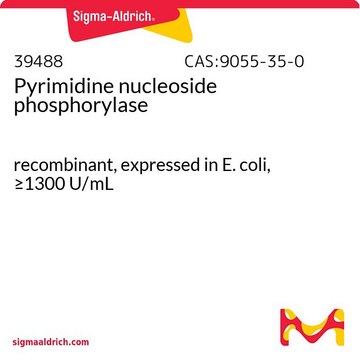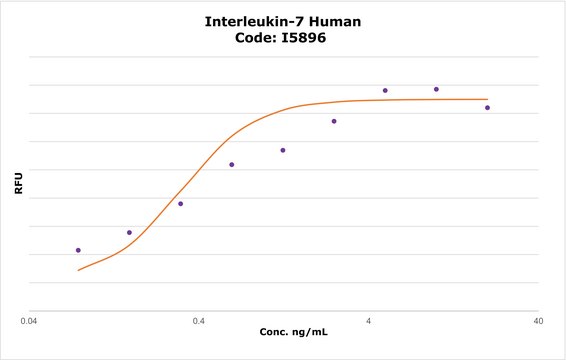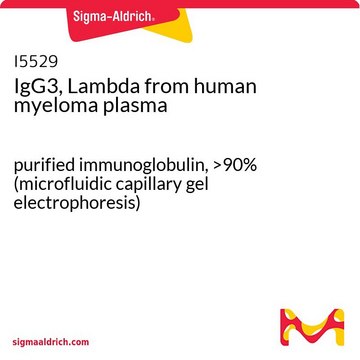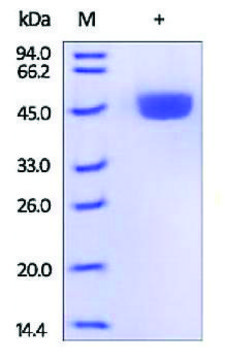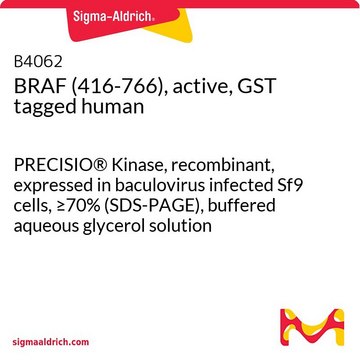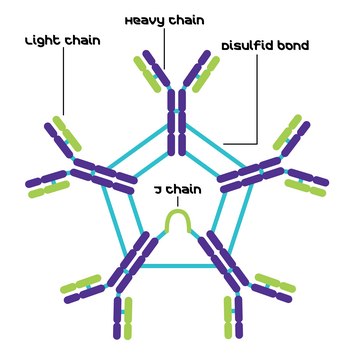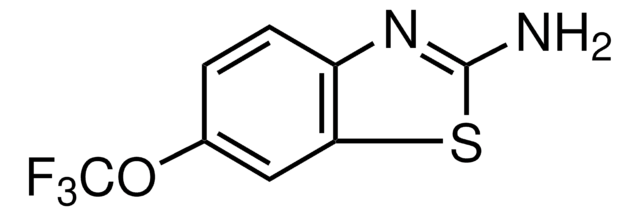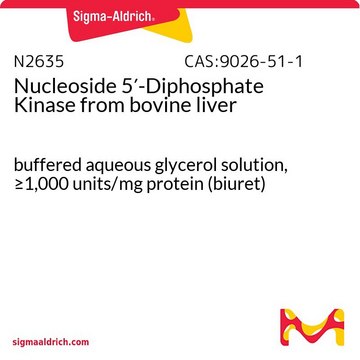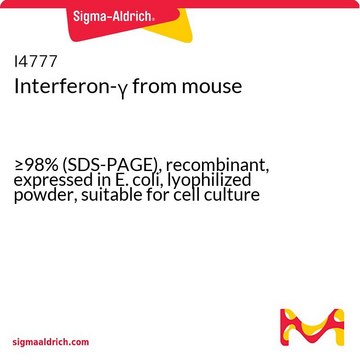I5528
Interferon-Inducible T Cell α Chemoattractant human
≥97% (SDS-PAGE), recombinant, expressed in E. coli, lyophilized powder, suitable for cell culture
Synonym(s):
β-R1, H174, I-TAC, SCYB9B
Sign Into View Organizational & Contract Pricing
All Photos(1)
About This Item
Recommended Products
biological source
human
Quality Level
recombinant
expressed in E. coli
Assay
≥97% (SDS-PAGE)
form
lyophilized powder
potency
10-20 ng/mL ED50
mol wt
8.3 kDa
packaging
pkg of 25 μg
technique(s)
cell culture | mammalian: suitable
impurities
<0.1ng/mg
UniProt accession no.
storage temp.
−20°C
Gene Information
human ... CXCL11(6373)
Biochem/physiol Actions
I-TAC (Interferon-inducible T-cell α chemoattractant) is a chemokine which participates in recruitment of inflammatory cell. It binds to receptor CXCR3 (C-X-C motif chemokine receptor 3). I-TAC is associated with the severity of dengue.
Physical form
Lyophilized in 30% acetonitrile and 0.1% trifluoroacetic acid containing 1.25 mg of bovine serum albumin.
Analysis Note
The biological activity is measured by its ability to induce chemotaxis in IL-2 cultured human lymphocytes.
Storage Class Code
11 - Combustible Solids
WGK
WGK 3
Flash Point(F)
Not applicable
Flash Point(C)
Not applicable
Regulatory Information
新产品
Choose from one of the most recent versions:
Already Own This Product?
Find documentation for the products that you have recently purchased in the Document Library.
B P Hoh et al.
Human immunology, 76(6), 421-426 (2015-04-11)
Dengue causes significantly more human disease than any other arboviruses. It causes a spectrum of illness, ranging from mild self-limited fever, to severe and fatal dengue hemorrhagic fever, as evidenced by vascular leakage and multifactorial hemostatic abnormalities. There is no
D P Widney et al.
Journal of immunology (Baltimore, Md. : 1950), 164(12), 6322-6331 (2000-06-08)
A new murine chemokine was identified in a search for glucocorticoid-attenuated response genes induced in the lung during endotoxemia. The first 73 residues of the predicted mature peptide are 71% identical and 93% similar to human CXCL11/IFN-inducible T cell alpha
Y Luo et al.
Journal of neurovirology, 4(6), 575-585 (1999-03-05)
H174 is a new member of the CXC-chemokine family. A cDNA probe containing the entire H174 coding region recognized a predominant inducible transcript of approximately 1.5 kb expressed in interferon (IFN) activated astrocytoma and monocytic cell lines. H174 message can
K E Cole et al.
The Journal of experimental medicine, 187(12), 2009-2021 (1998-06-24)
Chemokines are essential mediators of normal leukocyte trafficking as well as of leukocyte recruitment during inflammation. We describe here a novel non-ELR CXC chemokine identified through sequence analysis of cDNAs derived from cytokine-activated primary human astrocytes. This novel chemokine, referred
M R Rani et al.
The Journal of biological chemistry, 271(37), 22878-22884 (1996-09-13)
We report preliminary characterization of a gene designated beta-R1, which is selectively expressed in response to interferon beta (IFN-beta) compared with IFN-alpha. In human astrocytoma cells, beta-R1 was induced to an equivalent extent by 10 IU/mL IFN-beta or 2500 IU/mL
Our team of scientists has experience in all areas of research including Life Science, Material Science, Chemical Synthesis, Chromatography, Analytical and many others.
Contact Technical Service